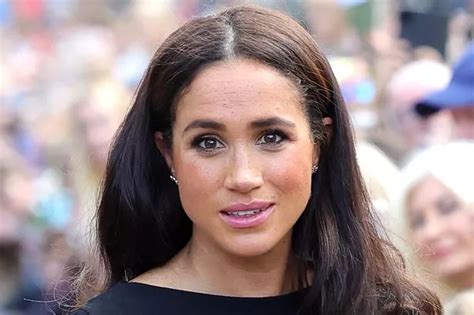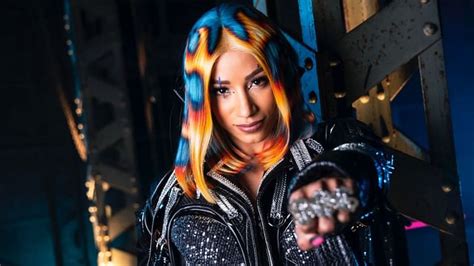
A recently shared photograph of Meghan Markle has ignited a firestorm of online debate, with many questioning its authenticity and accusing the Duchess of Sussex of attempting to manipulate her image. The image, which shows Markle in an apparently candid setting, has drawn criticism across social media platforms, prompting discussions about potential photo editing and the ethics of image manipulation, particularly for public figures.
The controversy stems from suspicions that the photograph, details of which are still emerging, may have been altered to present Markle in a more favorable light. Critics point to perceived inconsistencies in her appearance, background distortions, and unusual lighting as potential indicators of digital manipulation. The debate quickly escalated, encompassing broader discussions about media ethics, body image standards, and the pressures faced by celebrities to maintain a flawless public persona. This incident underscores the pervasive influence of social media in shaping public perception and the potential for digital imagery to both enhance and undermine credibility.
The image circulating online has fueled intense scrutiny. Allegations of manipulation, whether founded or not, can significantly impact public trust. Royal commentator Ingrid Seward commented on the situation, “This is a new onslaught of interest in her…but you can’t keep stoking the fire.” The incident also raises concerns about the impact on Markle’s public image and her future endeavors.
The Spark of Controversy
The furor began shortly after the photograph appeared on various social media platforms, accompanied by commentary alleging digital alteration. Internet users quickly dissected the image, pointing out perceived anomalies and inconsistencies. Accusations ranged from subtle retouching to more extensive manipulation of Markle’s facial features and body proportions. The debate intensified as side-by-side comparisons emerged, juxtaposing the image with previous photographs of the Duchess.
Analysis of Alleged Manipulations
Critics have focused on several key areas of the image, including:
-
Skin Smoothing and Retouching: Accusations suggest that Markle’s skin appears unnaturally smooth in the photograph, potentially achieved through digital filters or editing tools. Detractors argue that this level of retouching contributes to unrealistic beauty standards and promotes an unattainable ideal.
-
Facial Feature Alterations: Some observers claim that Markle’s facial features, such as her nose, jawline, and cheekbones, appear to have been subtly reshaped in the photograph. These allegations are based on comparisons with older photographs and assessments of facial symmetry.
-
Background Distortions: Discrepancies in the background, such as warped lines or blurred objects, have also been cited as evidence of potential manipulation. Critics suggest that these distortions may have occurred during the process of digitally altering Markle’s figure or features.
-
Lighting and Shadows: Inconsistencies in the lighting and shadows within the photograph have further fueled suspicions. Some claim that the lighting appears unnatural, indicating potential alterations to the image’s overall composition.
Social Media’s Role in Amplifying the Debate
Social media platforms have played a crucial role in amplifying the controversy. The image and related commentary have spread rapidly across Twitter, Instagram, Facebook, and various online forums. The hashtag associated with the controversy has generated thousands of posts, with users sharing their opinions, analyses, and satirical memes.
The speed and scale of social media sharing have contributed to the rapid escalation of the debate. Users have dissected the image with forensic precision, utilizing image analysis tools and crowd-sourced investigations to uncover potential evidence of manipulation. The resulting discussions have ranged from thoughtful analysis to heated arguments, reflecting the diverse perspectives and opinions surrounding the issue.
Ethical Considerations and Media Standards
The controversy raises important ethical considerations about the use of photo editing in the media and the responsibility of public figures to present authentic images. Critics argue that the alleged manipulation of Markle’s photograph undermines public trust and promotes unrealistic beauty standards. They contend that celebrities and media outlets have a moral obligation to present accurate and unaltered representations of individuals.
Conversely, some argue that photo editing is a common practice in the media industry and that minor retouching is often used to enhance images without fundamentally altering reality. They suggest that the criticism of Markle’s photograph may be excessive and that the focus should instead be on more significant instances of media manipulation.
Impact on Meghan Markle’s Public Image
The controversy has the potential to negatively impact Meghan Markle’s public image. Allegations of dishonesty and manipulation can erode trust and credibility, particularly among her supporters and admirers. The incident may also reinforce existing criticisms of Markle, such as accusations of being inauthentic or seeking excessive media attention.
However, it is also possible that the controversy could generate sympathy for Markle. Some may view the criticism as unfair or excessive, arguing that she is being unfairly targeted due to her celebrity status or personal choices. It’s also argued by some commentators that the constant scrutiny she faces from the media and public is unfair.
Expert Opinions and Commentary
Media experts and commentators have weighed in on the controversy, offering diverse perspectives on the ethical and societal implications of the situation. Some have criticized the alleged manipulation of Markle’s photograph, arguing that it contributes to a culture of unrealistic beauty standards and undermines public trust. Others have defended Markle, suggesting that the criticism is excessive and that minor retouching is a common practice in the media industry.
“In today’s digital age, the line between reality and illusion has become increasingly blurred. This incident highlights the need for greater transparency and accountability in the media, as well as a more critical approach to evaluating the images we consume,” said a leading media ethicist.
The Broader Context: Body Image and Social Media Pressure
The controversy surrounding Meghan Markle’s photograph must be viewed within the broader context of body image and social media pressure. In an era of pervasive social media, individuals are constantly bombarded with images of idealized beauty and perfection. This can lead to feelings of inadequacy, low self-esteem, and a desire to conform to unrealistic standards.
Public figures like Meghan Markle are particularly vulnerable to these pressures, as they are constantly scrutinized and judged based on their appearance. The pressure to maintain a flawless public image can lead to the use of photo editing and other techniques to enhance their appearance.
Legal Implications
While there might not be direct legal implications related to simply editing a photograph of oneself, certain circumstances could lead to legal issues.
-
Defamation: If the manipulated image is used to portray Meghan Markle in a false and damaging way, it could potentially lead to a defamation lawsuit. This would require proving that the image was published, false, and caused harm to her reputation.
-
Copyright Infringement: If the original photograph was taken by a professional photographer or agency, unauthorized alteration and distribution of the image could infringe on their copyright.
-
Terms of Service Violations: Social media platforms have terms of service that prohibit the posting of manipulated images that are misleading or deceptive. While this might not lead to legal action, it could result in the removal of the image and potential suspension of the account.
Royal Family Reactions
So far, there has been no official statement from the Royal Family regarding the controversy surrounding the photograph of Meghan Markle. Historically, the Royal Family tends to avoid commenting on such matters unless they escalate to a point where a response is deemed necessary to protect the institution’s reputation or to address misinformation. The silence from the Royal Family can be interpreted in several ways:
-
Avoiding Further Attention: Commenting on the situation could amplify the controversy and draw more attention to the image, potentially exacerbating the negative publicity.
-
Maintaining Neutrality: The Royal Family often maintains a neutral stance on personal matters involving individual members to avoid taking sides or appearing to interfere in private affairs.
-
Strategic Silence: It is possible that the Royal Family is assessing the situation and considering whether a response is warranted. They may be waiting to see how the controversy unfolds before making a statement.
The Power of Perception and Public Trust
Ultimately, the controversy surrounding Meghan Markle’s photograph underscores the power of perception and the importance of public trust. In an age of digital manipulation and pervasive social media, it is increasingly difficult to discern reality from illusion. Individuals must develop critical thinking skills and a healthy skepticism towards the images they consume.
Public figures, in turn, have a responsibility to be transparent and authentic in their representation of themselves. While minor retouching may be acceptable, excessive manipulation can erode trust and undermine credibility. The line between enhancement and deception is a delicate one, and public figures must carefully consider the ethical implications of their actions.
FAQ Section
1. What is the main controversy surrounding the photograph of Meghan Markle?
The main controversy revolves around allegations that a recently shared photograph of Meghan Markle has been digitally manipulated. Critics are questioning the authenticity of the image, suggesting that it may have been altered to present Markle in a more favorable light. The allegations include skin smoothing, facial feature alterations, background distortions, and inconsistencies in lighting and shadows.
2. What are some specific examples of alleged manipulations in the photograph?
Critics have pointed to several specific areas of concern:
- Unnaturally smooth skin achieved through digital filters or editing tools.
- Subtle reshaping of facial features such as the nose, jawline, and cheekbones.
- Warped lines or blurred objects in the background, indicating potential manipulation of the figure or features.
- Inconsistent lighting and shadows, suggesting alterations to the image’s overall composition.
3. How has social media contributed to the controversy?
Social media platforms have played a crucial role in amplifying the controversy. The image and related commentary have spread rapidly across Twitter, Instagram, Facebook, and various online forums. Users have dissected the image with forensic precision, utilizing image analysis tools and crowd-sourced investigations to uncover potential evidence of manipulation. The speed and scale of social media sharing have contributed to the rapid escalation of the debate.
4. What are the ethical considerations involved in this situation?
The controversy raises important ethical considerations about the use of photo editing in the media and the responsibility of public figures to present authentic images. Critics argue that the alleged manipulation of Markle’s photograph undermines public trust and promotes unrealistic beauty standards. They contend that celebrities and media outlets have a moral obligation to present accurate and unaltered representations of individuals.
5. How might this controversy impact Meghan Markle’s public image?
The controversy has the potential to negatively impact Meghan Markle’s public image. Allegations of dishonesty and manipulation can erode trust and credibility, particularly among her supporters and admirers. The incident may also reinforce existing criticisms of Markle, such as accusations of being inauthentic or seeking excessive media attention. However, it is also possible that the controversy could generate sympathy for Markle, with some viewing the criticism as unfair or excessive.
Deep Dive Analysis: Historical Context and Parallels
The controversy surrounding Meghan Markle’s photograph resonates with similar incidents involving public figures and image manipulation throughout history. From airbrushing models in magazines to digitally altering political figures, the use of image enhancement has long been a source of debate and ethical scrutiny.
Early Examples of Image Manipulation:
The practice of altering photographs dates back to the early days of photography itself. In the 19th century, photographers used techniques such as retouching negatives and combining multiple images to create idealized portraits or manipulate historical events. These early forms of manipulation were often used for political purposes, such as portraying leaders in a more favorable light or altering images to reflect prevailing social norms.
The Rise of Airbrushing:
In the mid-20th century, airbrushing became a common technique in advertising and fashion photography. Airbrushing artists would meticulously retouch photographs to remove blemishes, smooth skin, and enhance physical features. This practice contributed to the creation of unrealistic beauty standards and fueled anxieties about body image.
Digital Manipulation and the Photoshop Era:
The advent of digital photography and image editing software like Photoshop revolutionized the field of image manipulation. With digital tools, it became easier than ever to alter photographs in subtle or dramatic ways. This led to widespread concerns about the authenticity of images and the potential for deception.
Similar Controversies Involving Public Figures:
Numerous public figures have faced criticism for allegedly manipulating their photographs or allowing their images to be altered by media outlets. These controversies have often centered on issues such as body image, aging, and the portrayal of reality.
-
Models and Actresses: Models and actresses have frequently been accused of using photo editing to enhance their appearance, contributing to unrealistic beauty standards and pressures on young women.
-
Politicians: Politicians have also been embroiled in image manipulation controversies, with accusations ranging from altering photographs to appear younger or more attractive to manipulating images to convey a false impression of their policies or accomplishments.
-
Celebrities: Celebrities, in general, face constant scrutiny of their appearance and are often subjected to extensive photo editing by media outlets. This has led to debates about the ethics of altering celebrities’ images without their consent and the impact on their self-esteem.
The Impact on Public Perception:
The pervasive use of image manipulation has had a profound impact on public perception. Studies have shown that exposure to altered images can lead to:
-
Lower Self-Esteem: Individuals who are frequently exposed to idealized images of beauty are more likely to experience feelings of inadequacy and low self-esteem.
-
Body Image Anxiety: The pressure to conform to unrealistic beauty standards can lead to body image anxiety and eating disorders.
-
Distorted Perceptions of Reality: The constant exposure to manipulated images can distort individuals’ perceptions of reality, making it difficult to distinguish between what is real and what is fabricated.
The Need for Media Literacy:
In an age of digital manipulation, media literacy is more important than ever. Individuals need to develop critical thinking skills and a healthy skepticism towards the images they consume. This includes:
-
Understanding the Techniques of Image Manipulation: Learning about the various techniques used to alter photographs can help individuals identify potential manipulations.
-
Questioning the Authenticity of Images: Individuals should always question the authenticity of images, particularly those that appear too good to be true.
-
Seeking Out Diverse and Realistic Representations: Individuals should seek out diverse and realistic representations of beauty and body image in the media.
The Role of Social Media Platforms:
Social media platforms have a responsibility to address the issue of image manipulation. This includes:
-
Developing Tools to Detect Altered Images: Platforms can develop tools to detect altered images and flag them for users.
-
Promoting Media Literacy Education: Platforms can promote media literacy education to help users understand the techniques of image manipulation and develop critical thinking skills.
-
Enforcing Policies Against Misleading Content: Platforms can enforce policies against misleading content, including manipulated images that are used to deceive or harm others.
Conclusion: Navigating the Digital Landscape with Awareness
The controversy surrounding Meghan Markle’s photograph serves as a reminder of the pervasive influence of image manipulation in the digital age. By understanding the techniques of manipulation, questioning the authenticity of images, and promoting media literacy, individuals can navigate the digital landscape with greater awareness and critical thinking skills. Public figures, media outlets, and social media platforms also have a responsibility to promote transparency, authenticity, and ethical practices in the representation of images. Only through a collective effort can we create a more realistic and inclusive media environment that fosters positive body image and promotes public trust.









